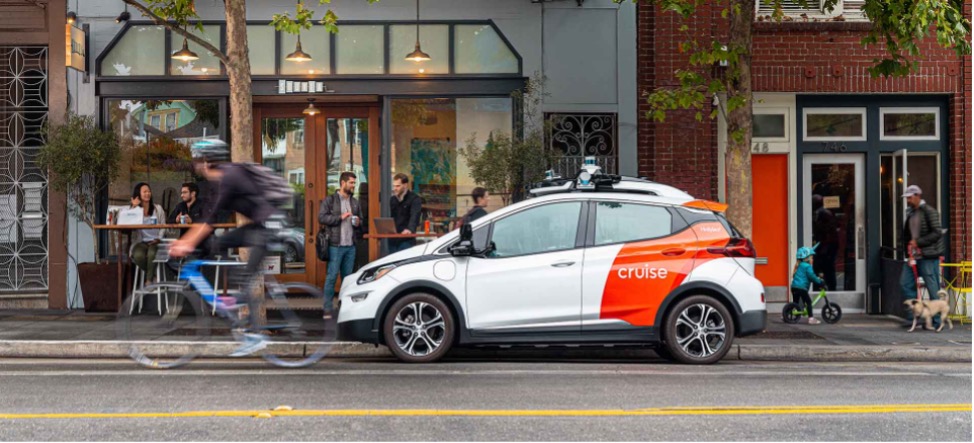
The primary challenges of bringing autonomous driving taxis to Europe
In the mid-20th century, most big cities around the world are providing taxi services, with highly regulated and licensing requirements. This consolidated market quickly shifted when Uber entered the market by disrupting the old system with new technology. In 2010 the first Uber taxi drove people around in San Francisco disrupting the market by offering customers an order system for taxis in the app. Now Uber has expanded almost globally to most big cities (Nastjuk et al., 2020).
New rumours about another disruptive technology in the taxi service seem to be on the rise. Next October Elon Musk is planning to announce their new highly anticipated robotaxi. This seems like an innovation, but he is not the first one to come up with this idea. Currently, some cities in the United States and China have already implemented the first fully autonomous taxi service. For example, in Phoenix where Cruise and Waymo by Google are operating more than tens of thousands of weekly trips without the need of a taxi driver (Yang, 2024). While the US and China have started to significantly innovate in autonomous taxis, Europe’s innovation in this domain is more complex.
Firstly, Europe is known for its strong automotive sector with global car manufacturers such as Mercedes-Benz, BMW, Volkswagen, Porsche and many more. Some countries have also started with pilot testing for new development in full self-driving for cars (FSD). However, the FSD cars are still not available for mass market in Europe. Up to today, it seems like the American and Chinese giants seem to be making the largest advancements into this area. Google has invested 5 billion into the advancement of Waymo, and General Motors has invested 10 billion into Cruise (Abrams, 2024; Elias, 2024).
A second factor playing a key role in comparing the European market to the US, is Europe’s strict regulations. Making it more difficult to test and experiment and increasing the barriers to adopt FSD cars as well as autonomous taxis. The first country in the EU to allow testing and experimenting with FSD was Germany in 2022, who passed a law allowing autonomous cars to drive in certain strict regulated areas (Kraftfahrt-Bundesamt – Legislation on Autonomous Driving, n.d.). As well as some other countries in Europe that have started to create test zones on public roads for autonomous driving cars. However, for Europe to fully integrate autonomous taxis onto the road there is a long way to go. They need a systemic regulatory framework that addresses all issues in all countries.
A third critical aspect of autonomous driving is safety. For autonomous driving cars, roads must be easily drivable and comprehendible by algorithms. In the United States most cities are structured for cars which make it easier for algorithms to know how to drive. Historic layouts in Europe make it more difficult in complex urban roads to provide safe navigation (Cuppa, 2024). To make autonomous driving safe in these areas, infrastructure or the technology must be adapted and enhanced.
While many other factors play a role, like the public opinion of people, insurance and ethics, these are the most important. Although all these issues seem like big challenge, fast technological innovation in AI and advancements in autonomous taxis already implemented in the United States and China make it clear that Europe eventually will implement autonomous taxis. The question now should rather be, when will autonomous taxis be publicly adopted in Europe.
References:
[1] Abrams, E. H. (2024, May 20). How GM’s Cruise investment became a liability.
[2] Fortune. https://fortune.com/2024/05/20/gm-cruise-investment-crash-mary-barra/#
[3] Cuppa. (2024, January 27). Unveiling the Mystery: Why European Roads are So Narrow and Their Unexpected Benefits. RoadtripBuzz. https://roadtripbuzz.com/why-are-european-roads-so-narrow/
[4] Elias, J. (2024, July 23). Alphabet to invest $5 billion in self-driving car unit Waymo. CNBC. https://www.cnbc.com/2024/07/23/alphabet-to-invest-5-billion-in-selfdriving-car-unit-waymo.html
[5] Kraftfahrt-Bundesamt – Legislation on autonomous driving. (n.d.).
[6] KBAWEB. https://www.kba.de/EN/Themen_en/Marktueberwachung_en/Produktpruefunge_en/AutomatisiertesAutonomesFahren_en/Gesetzgebung_en/gesetzgebung_autonomes_fahren_node_en.html
[7] Nastjuk, I., Herrenkind, B., Marrone, M., Brendel, A. B., & Kolbe, L. M. (2020). What drivesthe acceptance of autonomous driving? An investigation of acceptance factors from an end-user’s perspective. Technological Forecasting and Social Change, 161, 120319. https://doi.org/10.1016/j.techfore.2020.120319
[8] Yang, Z. (2024, January 23). What’s next for robotaxis in 2024. MIT Technology Review. https://www.technologyreview.com/2024/01/23/1086936/whats-next-for-robotaxis2024/
